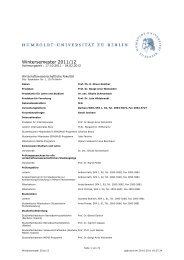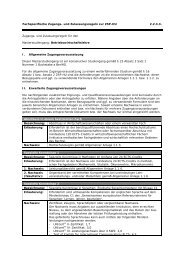Measuring the Effects of a Shock to Monetary Policy - Humboldt ...
Measuring the Effects of a Shock to Monetary Policy - Humboldt ...
Measuring the Effects of a Shock to Monetary Policy - Humboldt ...
You also want an ePaper? Increase the reach of your titles
YUMPU automatically turns print PDFs into web optimized ePapers that Google loves.
30 Bayesian FAVARs with Agnostic Identification<br />
dimensional models, due <strong>to</strong> <strong>the</strong> fact that in case <strong>of</strong> large cross-sections, highly dimen-<br />
sional likelihoods make irregularities more likely. This can reduce <strong>the</strong> number <strong>of</strong> draws<br />
relevant for convergence and hence saves time, which in a computer-intensive statistical<br />
framework is <strong>of</strong> great relevance. I follow <strong>the</strong> suggestions <strong>of</strong> Eliasz [2005] and apply <strong>the</strong><br />
first step estimates <strong>of</strong> PCA <strong>to</strong> select <strong>the</strong> starting values. A detailed description how <strong>to</strong><br />
obtain <strong>the</strong> starting values via <strong>the</strong> first step PCA can be found his paper. Since Gelman<br />
and Rubin [1992] have shown that a single chain <strong>of</strong> <strong>the</strong> Gibbs sampler might give a ”false<br />
sense <strong>of</strong> security ”, it has become common practice <strong>to</strong> try out different starting values, at<br />
best from a randomly (over)dispersed set <strong>of</strong> parameters and <strong>the</strong>n check <strong>the</strong> convergence<br />
verifying that <strong>the</strong>y lead <strong>to</strong> similar empirical distributions. The Inference part is very close<br />
<strong>to</strong> BBE [2005] and Eliasz [2005]. This part can also be found in a slightly more elaborate<br />
verion in <strong>the</strong>ir papers. But for completenes it is stated here.<br />
Conditional density <strong>of</strong> <strong>the</strong> fac<strong>to</strong>rs<br />
In this subsection we want <strong>to</strong> draw from<br />
pF ( ˜ FT | ˜ XT , θ)<br />
assuming that <strong>the</strong> hyperparameters <strong>of</strong> <strong>the</strong> parameter space θ are given, hence I describe<br />
Bayesian Inference on <strong>the</strong> dynamic evolution <strong>of</strong> <strong>the</strong> fac<strong>to</strong>rs Ft conditional on Xt for<br />
t = 1, . . . , T and conditional on θ. The transformations that are required <strong>to</strong> draw <strong>the</strong><br />
fac<strong>to</strong>rs have been done in <strong>the</strong> previous section. The conditional distribution, from which<br />
<strong>the</strong> state vec<strong>to</strong>r is generated, can be expressed as <strong>the</strong> product <strong>of</strong> conditional distributions<br />
by exploiting <strong>the</strong> Markov property <strong>of</strong> state space models in <strong>the</strong> following way<br />
pF ( ˜ FT | ˜ XT , θ) = pF (FT | ˜ XT , θ)pF (FT −1 | FT , ˜ XT , θ), . . . , pF (F1 | F2, ˜ XT , θ)<br />
pF ( ˜ FT | ˜ XT , θ) = pF (FT | ˜ XT , θ) T −1<br />
t=1 pF (Ft | Ft+1, ˜ XT , θ)<br />
At this point it is important <strong>to</strong> note that <strong>the</strong> conditioning is on <strong>the</strong> first [K + M] rows <strong>of</strong><br />
FT only, since o<strong>the</strong>rwise for <strong>the</strong> case <strong>of</strong> d > 1 <strong>the</strong> VCV <strong>of</strong> <strong>the</strong> density would be singular.




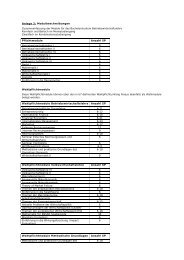
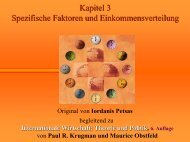
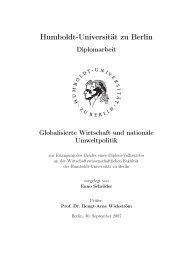
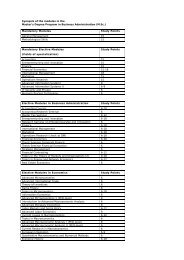
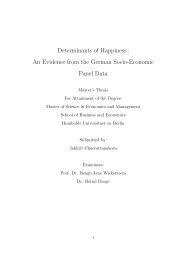
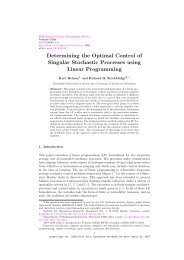
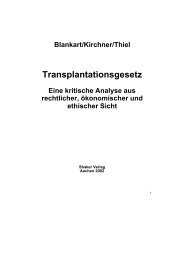
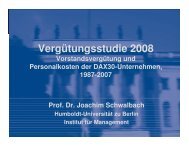

![[Text eingeben] [Text eingeben] Lebenslauf Anna-Maria Schneider](https://img.yumpu.com/16300391/1/184x260/text-eingeben-text-eingeben-lebenslauf-anna-maria-schneider.jpg?quality=85)

